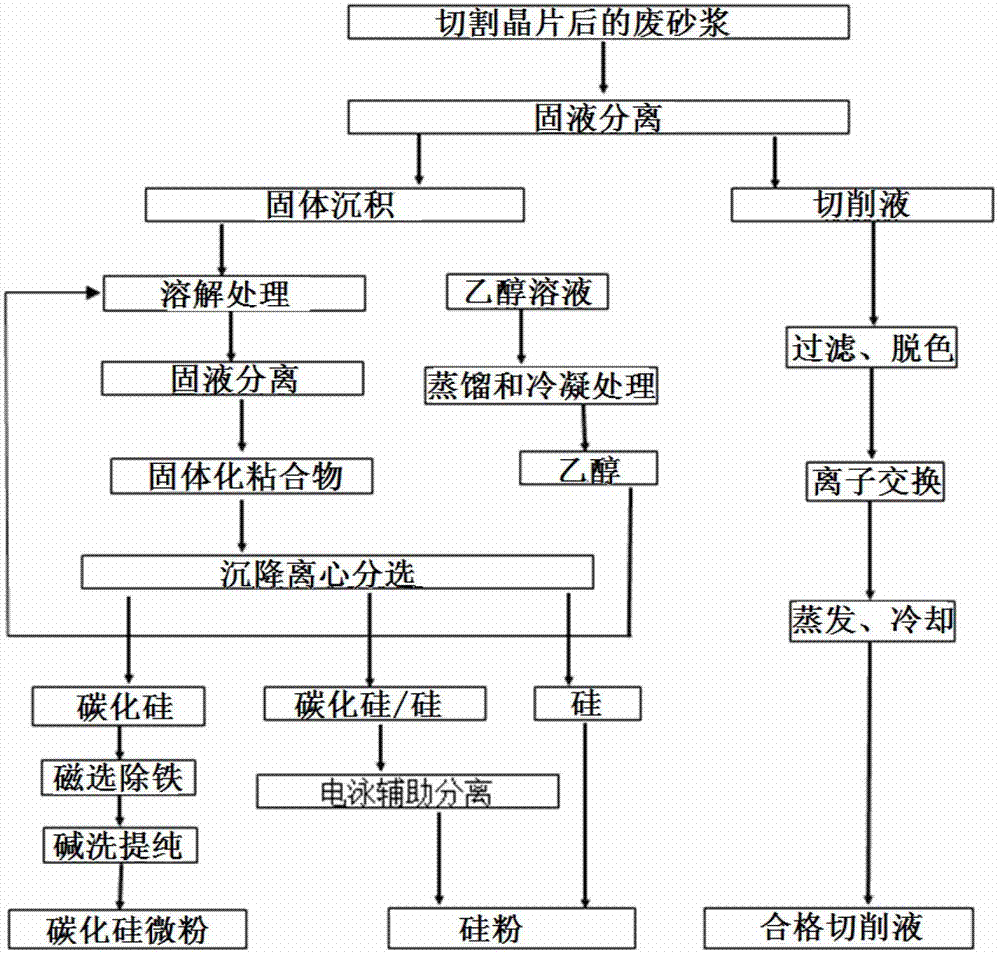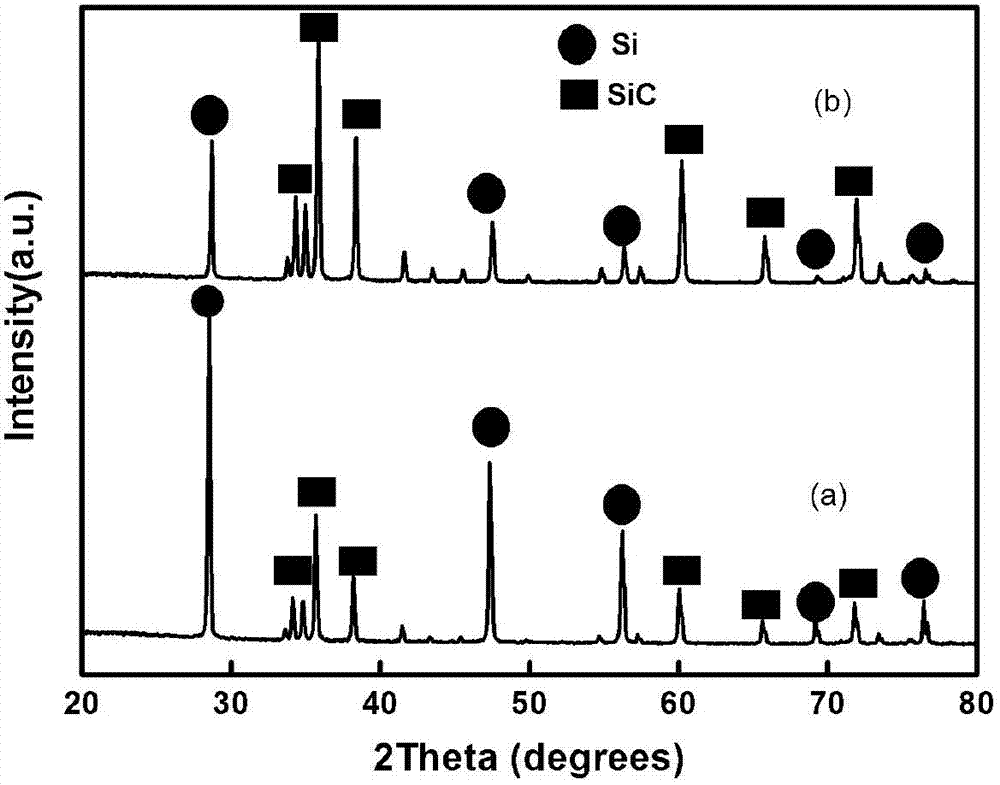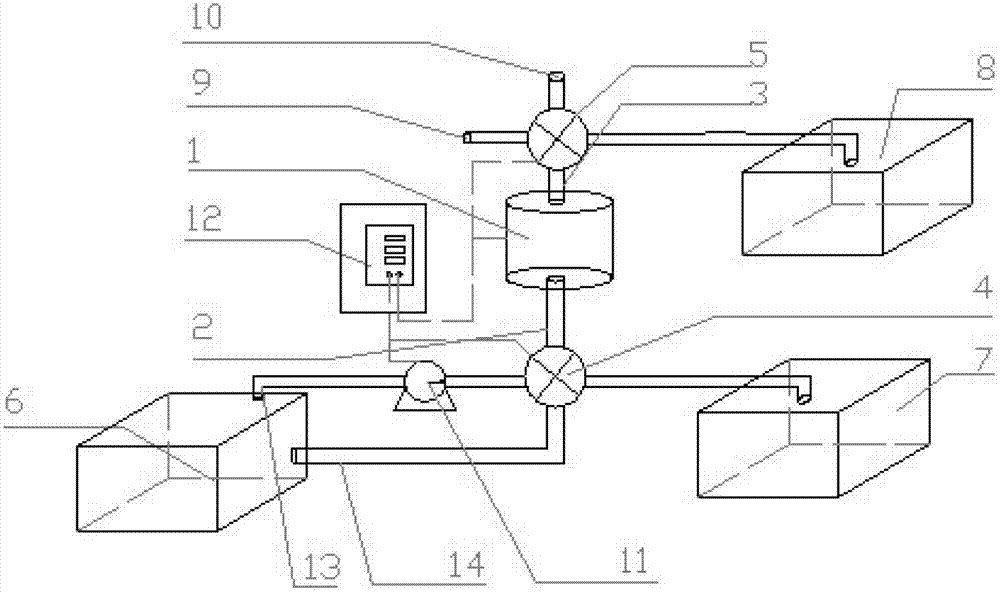Method for separating cutting fluid, silicon carbide and silicon powder from wafer cutting mortar
A silicon carbide, separation technology, applied in the field of silicon carbide and silicon powder, separation of cutting fluid, can solve the problems of large energy consumption, no breakthrough, waste of precious raw materials, etc., to reduce processing and raw material costs, reduce pollution and Energy consumption, the effect of enhancing the overall competitiveness
- Summary
- Abstract
- Description
- Claims
- Application Information
AI Technical Summary
Problems solved by technology
Method used
Image
Examples
Embodiment 1
[0033] Such as figure 1 Shown, the present invention is a kind of method that separates cutting fluid, silicon carbide and silicon powder from wafer cutting mortar, it is characterized in that, described separation method comprises the following processing steps:
[0034] The first step: solid-liquid separation, using a filter press to separate the cutting fluid polyethylene glycol in the cutting mortar from silicon carbide and silicon powder;
[0035]The second step: generate sand powder, add ethanol to the silicon carbide and silicon powder separated in the first step and stir to dissolve the polyethylene glycol remaining in the silicon carbide and silicon powder, and then separate the solid and liquid with a filter press , and then obtain sand powder by washing and then drying; this can improve the separation effect of silicon carbide / silicon powder, and at the same time through the steps of ethanol solution, distillation / condensation, etc., it can realize more recovery of ...
Embodiment 2
[0044] On the basis of Example 1, the preferred embodiment is that the filter press in the first step is a plate-and-frame filter press, and all the other processes are identical to Example 1.
Embodiment 3
[0046] On the basis of Example 1, a preferred embodiment also includes that the addition of ethanol in the second step is in a weight ratio of 1:2 to 1:3, and the remaining processes are exactly the same as in Example 1.
PUM
 Login to View More
Login to View More Abstract
Description
Claims
Application Information
 Login to View More
Login to View More - R&D
- Intellectual Property
- Life Sciences
- Materials
- Tech Scout
- Unparalleled Data Quality
- Higher Quality Content
- 60% Fewer Hallucinations
Browse by: Latest US Patents, China's latest patents, Technical Efficacy Thesaurus, Application Domain, Technology Topic, Popular Technical Reports.
© 2025 PatSnap. All rights reserved.Legal|Privacy policy|Modern Slavery Act Transparency Statement|Sitemap|About US| Contact US: help@patsnap.com



